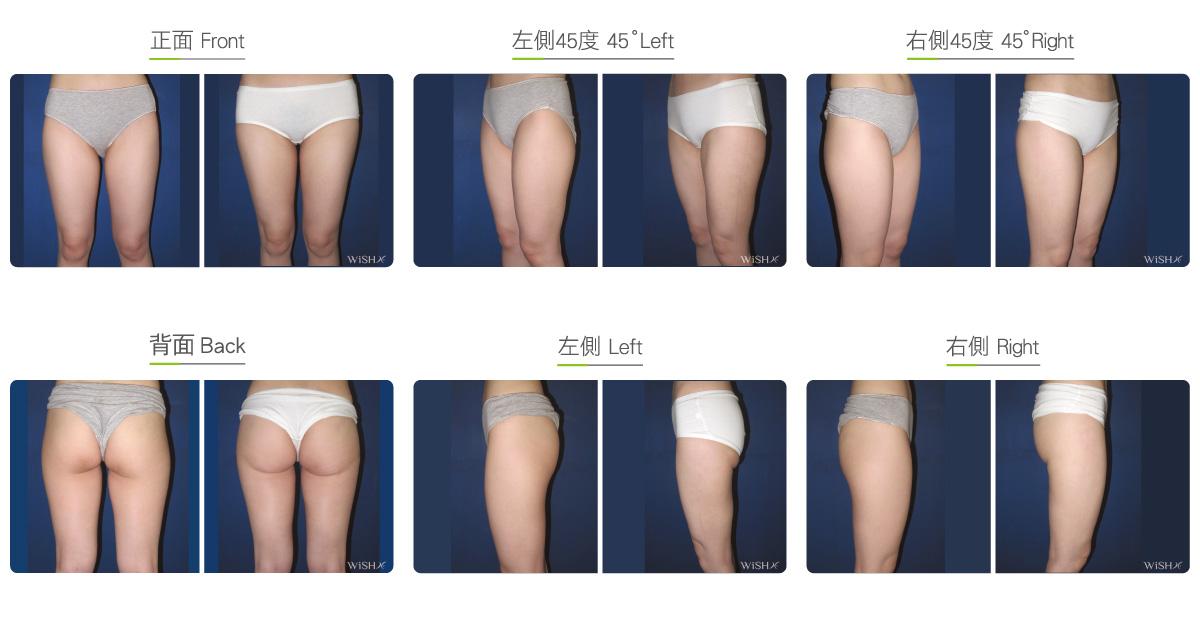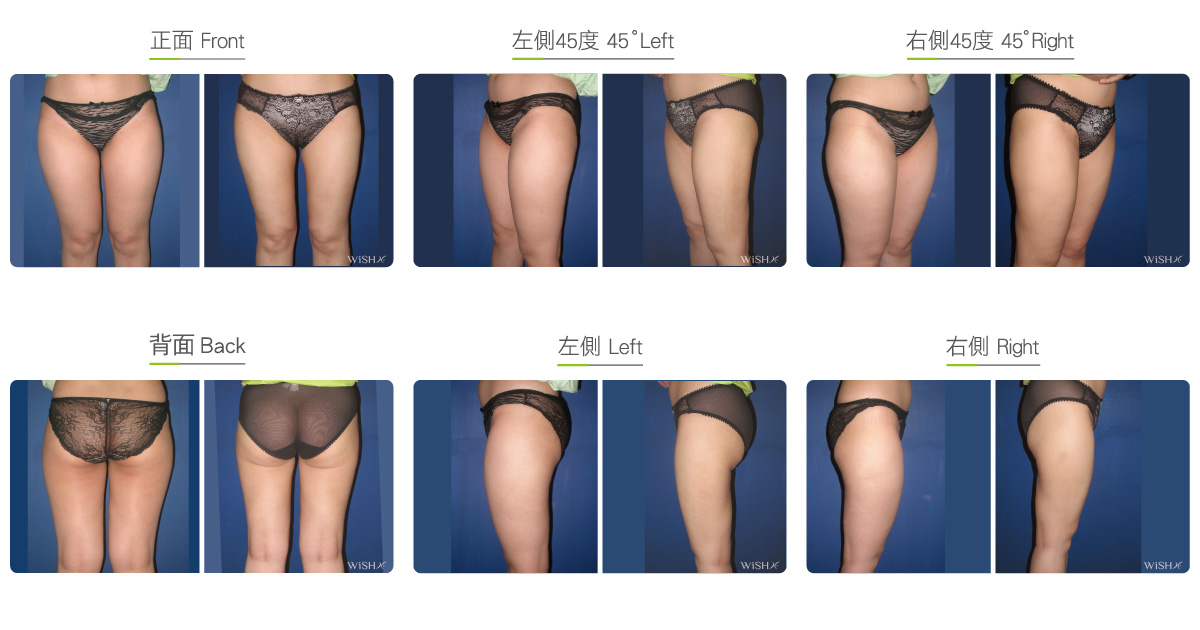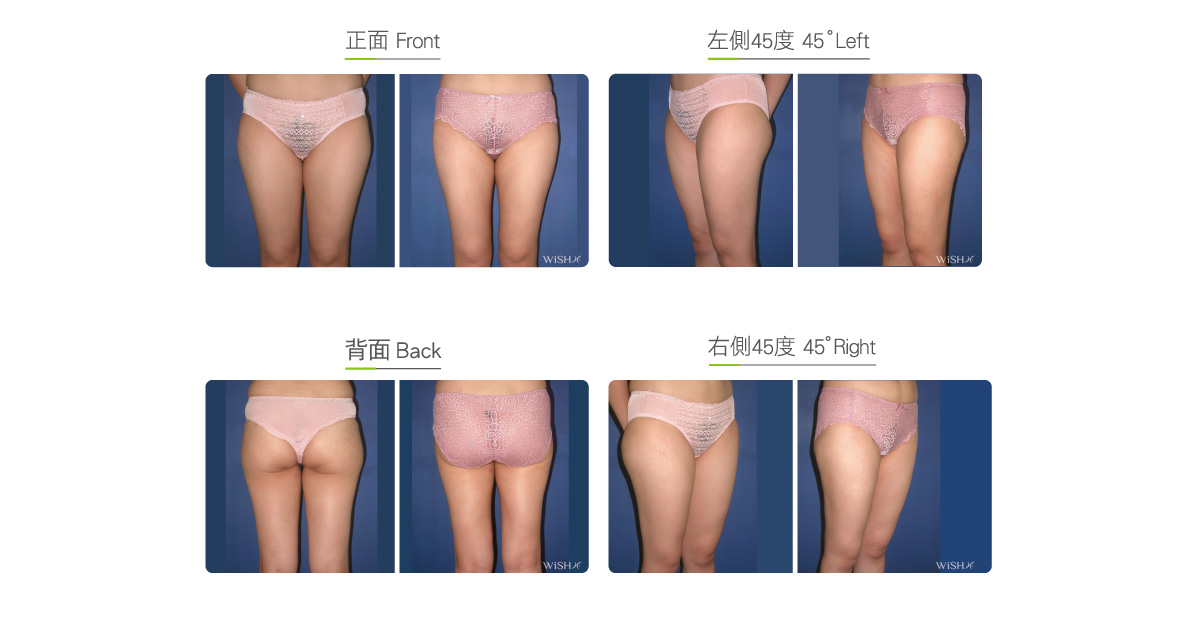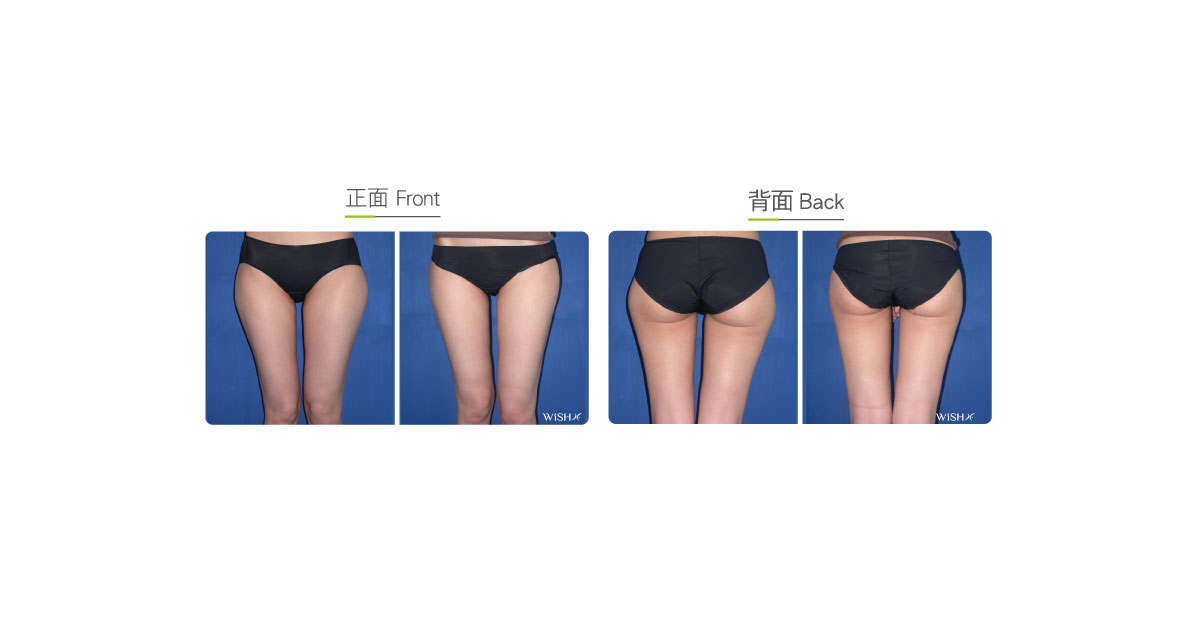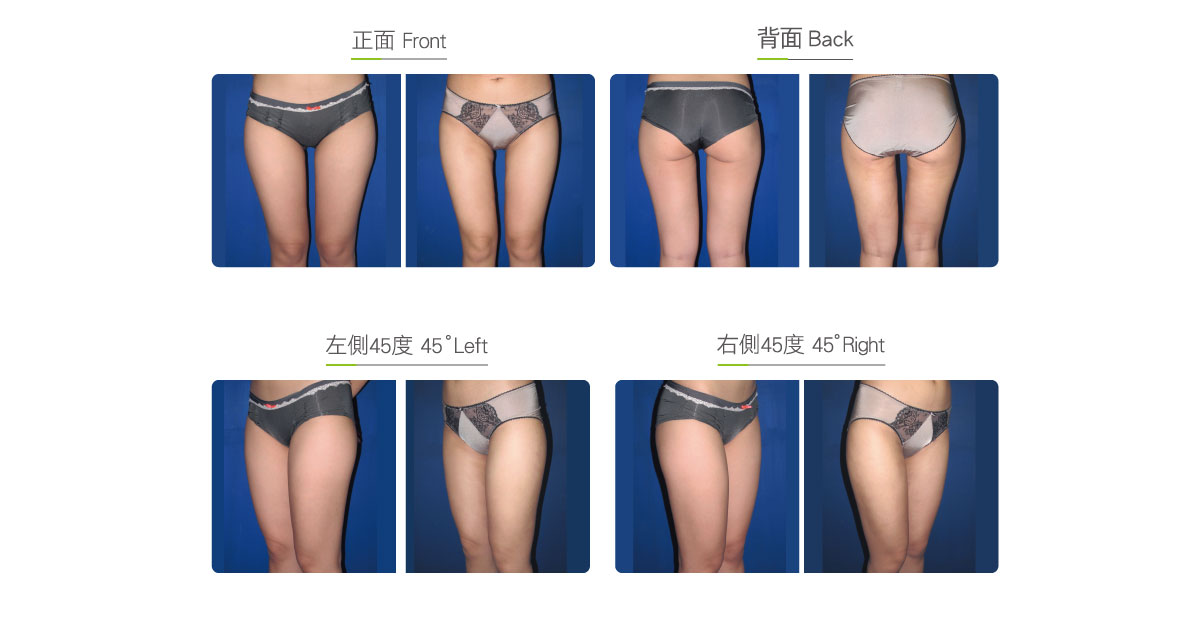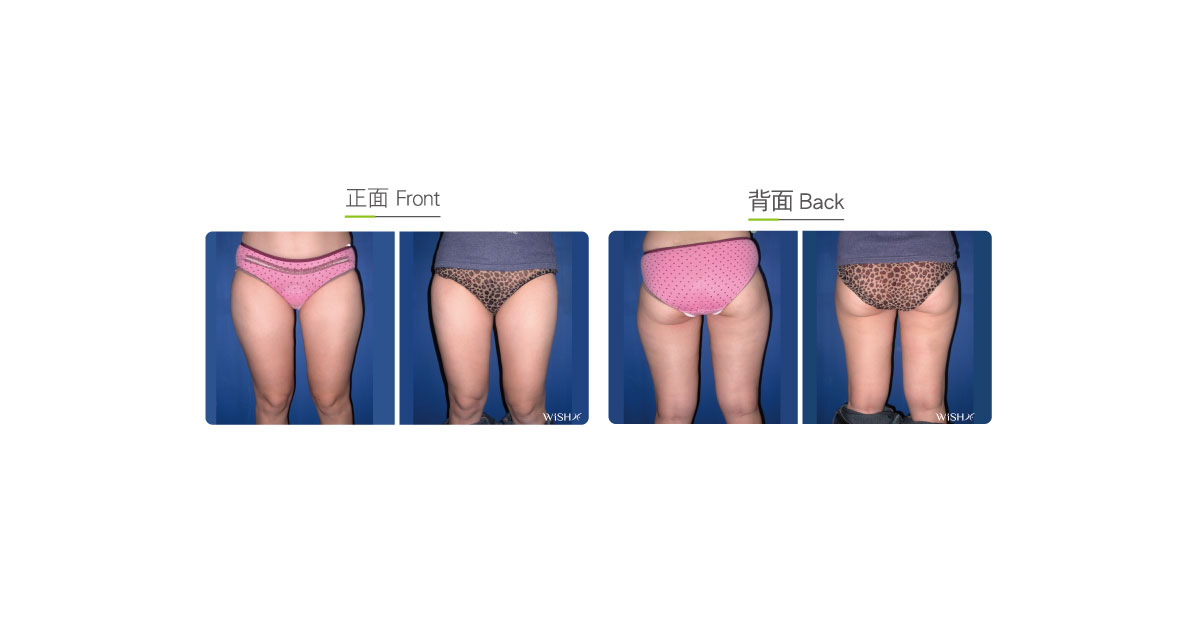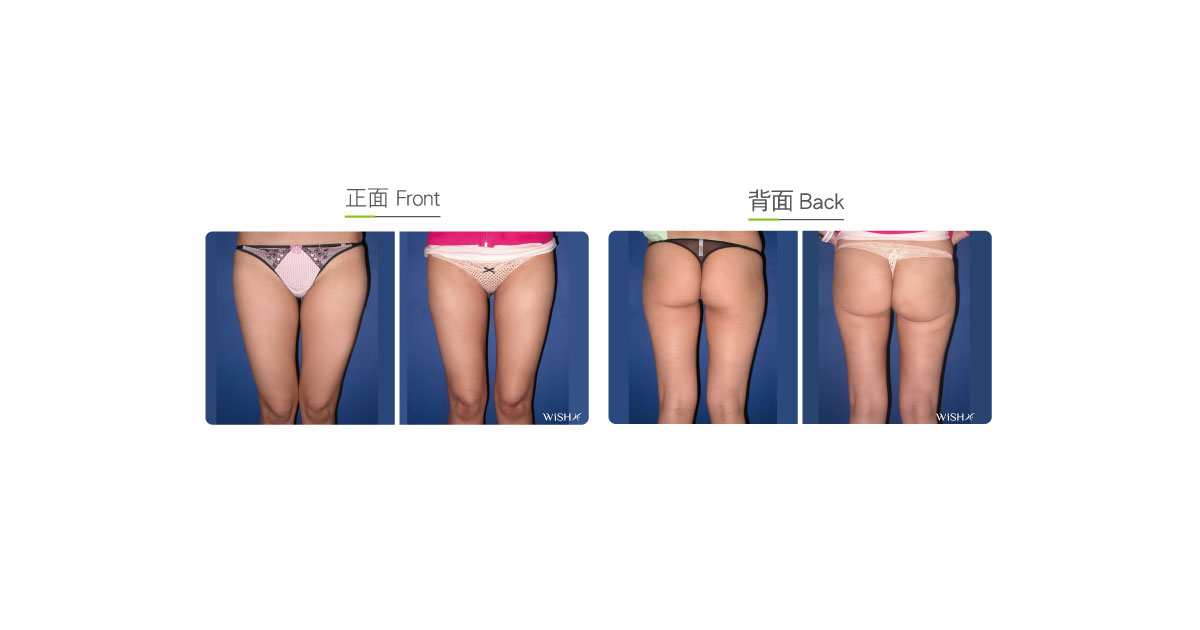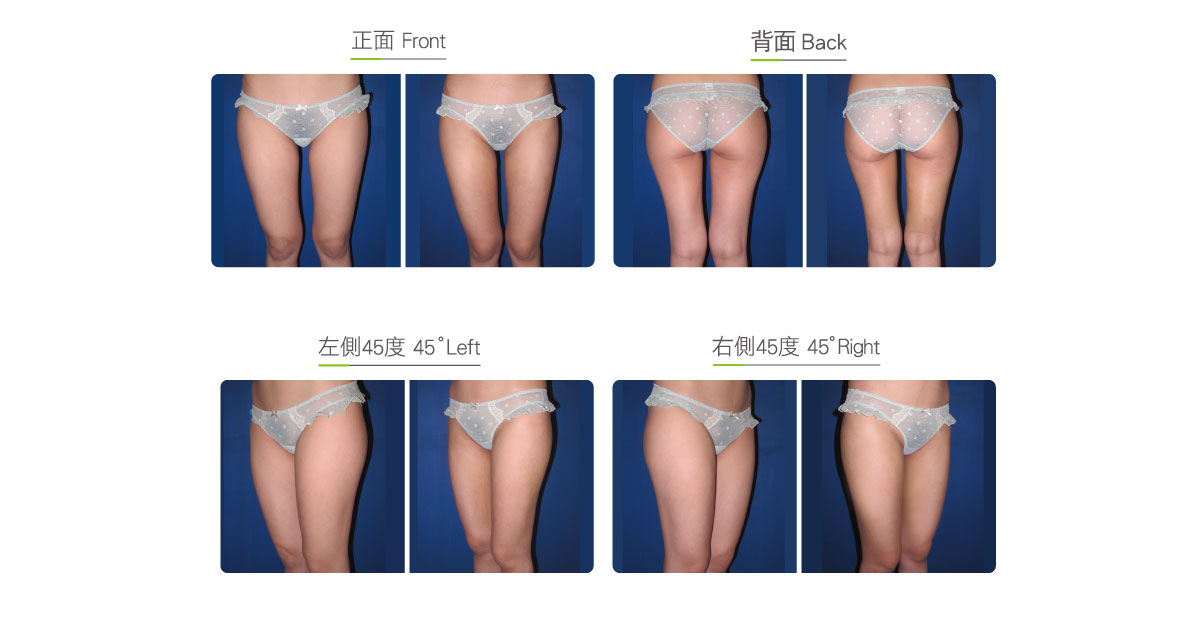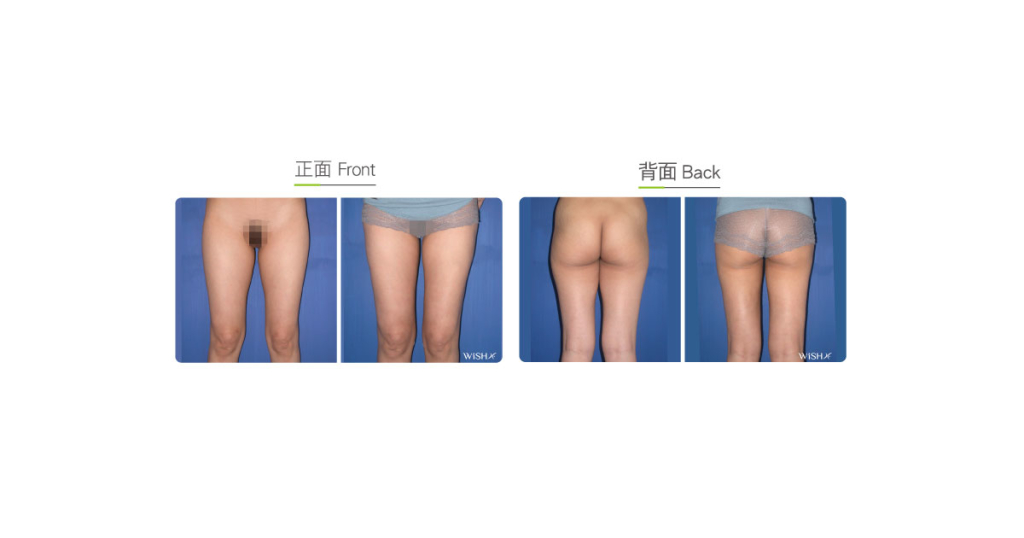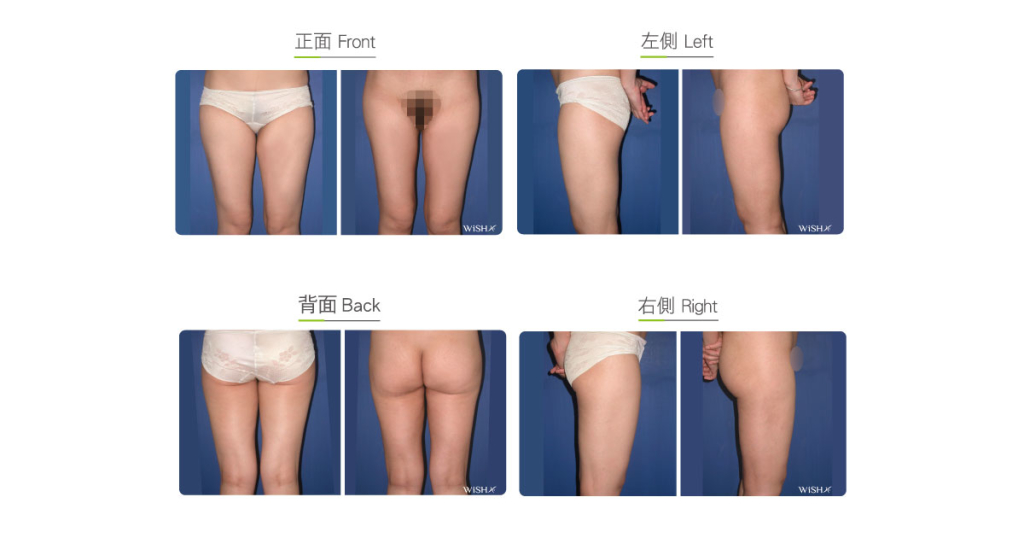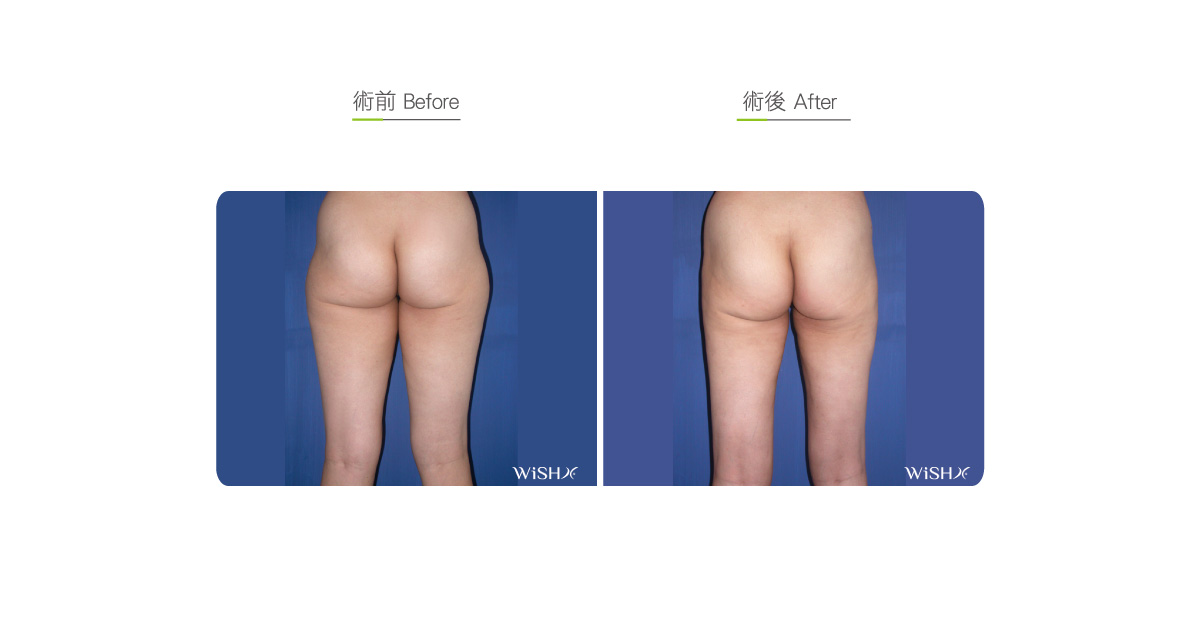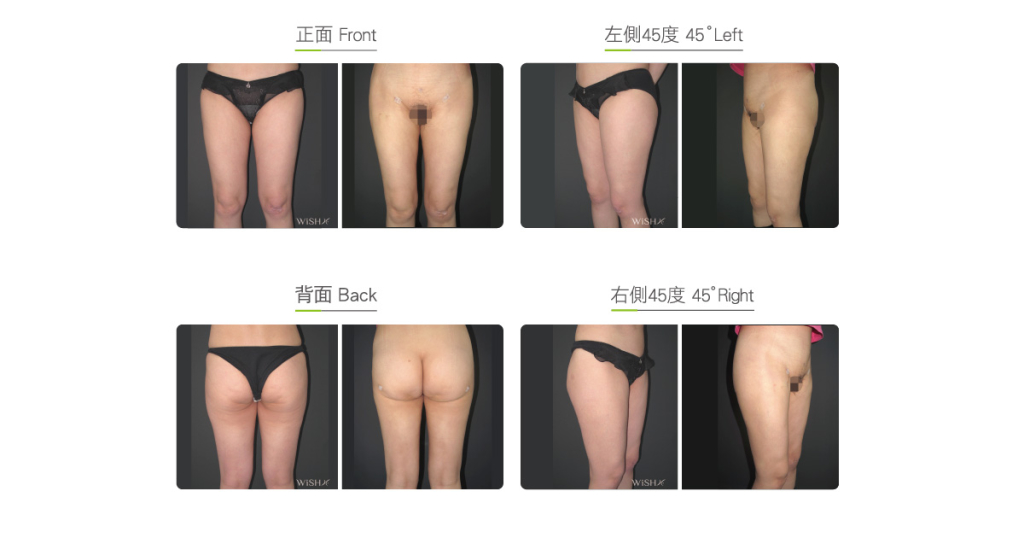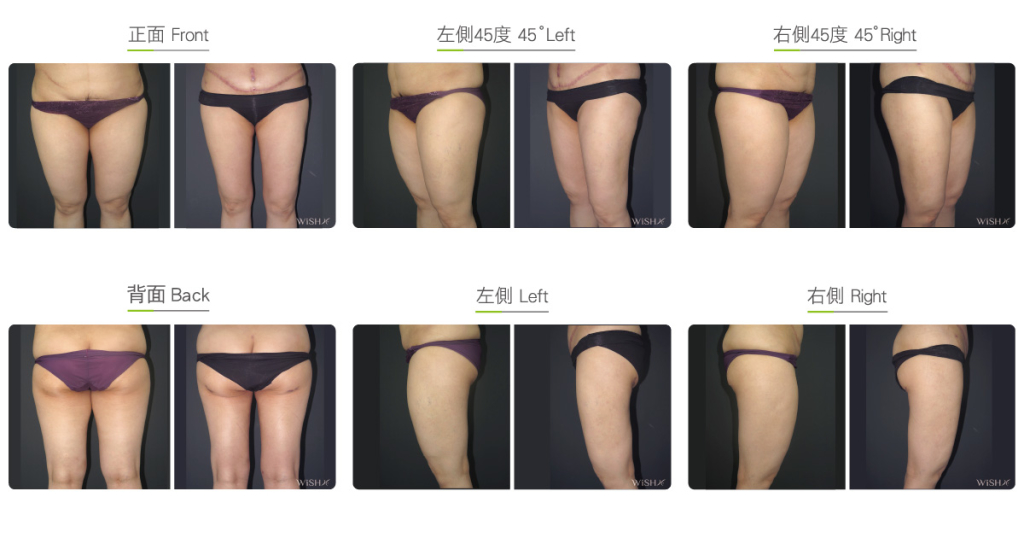Thigh Liposuction
Accounting for a large body surface area, the thighs are always the first priority to be improved for many females since they are most likely to accumulate excess fats. Because thigh fats are mostly deep fats, as long as the skin is thicker than 2 cm, liposuction is conducted to achieve distinct improvement. Based on the site of fat deposits, the surgery is divided into regional liposuction (mainly the medial or lateral parts of the thigh) and annular liposuction (around the entire thigh). If necessary, the liposuction extends to the lateral buttocks at the superior lateral part of the thigh or the medial lateral knee. Although the field of thigh liposuction is very flexible, attention should be paid to avoid excess liposuction at the anterior or lateral inferior side of the thigh to prevent postoperative skin depression or an obvious muscular texture.
This surgery is performed by making a 1-cm incision at the anterior groin and posterior gluteal fold. After injecting hemostatics and painkillers into liposuction sites, Dr. Chuang uses Ultra-Z lipolysis to emulsify superficial and deep fats and introduces liposuction tubes of various lengths and sizes into the subcutaneous area to remove lysed fat globules all around the thighs. This method not only effectively increases the volume of fats removed but also prevents the risks of skin unevenness or irregularities. If necessary, it can be conducted with gluteal fold liposuction to sculpt a smiling line between the thigh and buttock. Clinically, the liposuction volume at the thighs is much larger than that at other body parts. Annular liposuction of both thighs removes 2500–3000 cc of fats on an average, which is a relatively large-volume liposuction. Therefore, patients should stay in the hospital for 3–4 h of observation before returning home to rest. All patients should wear a compression garment for over 3 months to ensure skin smoothness and tightness, thus achieving the ultimate result of leg sculpting.
Surgical conditions
Duration
- Type of anesthesia: General anesthesia or IV sedation + local anesthesia
- Type of incision: A 1-cm incision at the groin and gluteal fold
- Recovery: 5–7 days
- Removal of stitches: 7–10 days
General instructions
No food and water on the day of surgery
Preoperative:
- Suspend the use of anti-coagulants (if taken) 1 week preoperatively.
Postoperative:
- Avoid running or lower limb work for 1 week postoperatively.
- Wear a compression garment for 3 months postoperatively to prevent skin laxity.
- Undertake diet control or weight loss for 6 months postoperatively to achieve quicker results.
- Control weight increase for a long time after the operation to prevent the recurrence of obesity.
Ideal candidates
- Patients with a thigh skin thickness of over 2 cm
- Those with a pear-shaped stature typical of lower body obesity
- Those predisposed to obesity with BMI of over 30 kg/m2
- Those with regional fat deposits at the thigh (such as medial or lateral cellulites)
- Those with non-mitigating fat deposits at the thighs due to pregnancy
- Those who have undergone weight loss or other fat dissolve treatments whose results are indistinct
- Those who have undergone thigh liposuction but with uneven skin
Possible complications
- Scar
- Skin unevenness
- Skin laxity or orange peel-like skin
- Skin numbness
- Pigmentation (temporary)
Surgical advantages
-
Surgical results are rapidly and obviously noticed.
-
The scope of liposuction is flexibly adjusted based on the site of fat deposits.
-
Because there are no vital nerves or blood vessels, the surgery is very safe.
-
The recurrence of obesity is less likely with large-area annular liposuction.
Surgical drawbacks
-
The surgical part is large, and postoperative recovery is relatively slow.
-
Postoperative pain and swelling are relatively obvious.
-
Subcutaneous lumps or hemostasis may be difficult to subside.
-
Excess liposuction may cause skin unevenness or laxity (orange peel-like skin).
-
Abundant liposuction (over 4000 cc) may result in the risks of fat embolism (incidence less than 3%).

